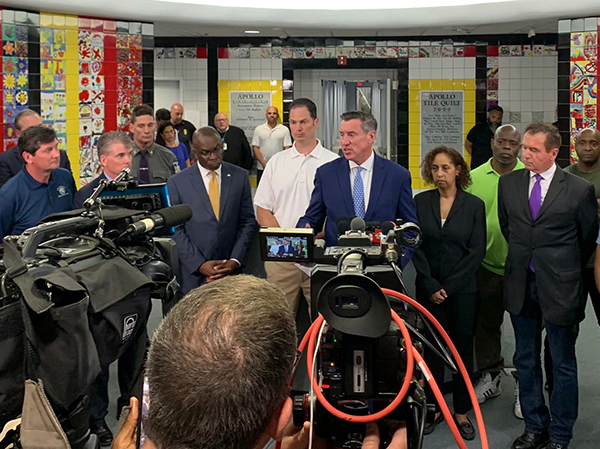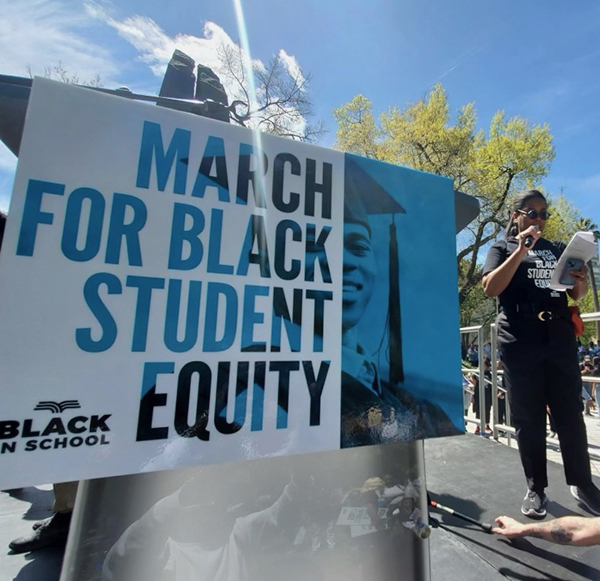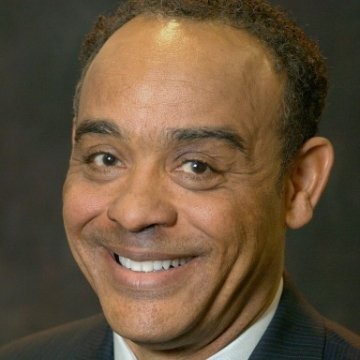THE HUTCHINSON REPORT: Bus drivers’ cries for help must be heeded

By Earl Ofari Hutchinson
Contributing Columnist
The footage was dramatic, shocking and enraging. There was a woman punching, shoving and kicking a bus driver.
The driver tried to fight back and that made the footage even more shocking and agonizing. The attack in graphic, brutal detail punctuated what bus drivers have complained about — going as far as conducting a mini-strike — while demanding more protection and the implementation of sweeping new safety measures for drivers and train operators.
I held a press conference the first week of May at a rail station in South Los Angeles. I challenged the board of the Metropolitan Transportation Authority to immediately ramp up safeguards for drivers. I pushed the board specifically to establish roving security teams.
They would be specially trained security personnel whose sole job is to ride inside the buses and trains day and night watching, monitoring and intervening, when necessary, at the first hint of any physical or verbal threat to a driver.
A number of major cities, notably Chicago and New York City, have fully staffed transit security forces, both uniformed and plain clothes who ride the buses and trains to safeguard the operators and passengers from crime and violent attacks. Los Angeles has a downsized version of this force. But to hear the drivers complain, so far it has been largely ineffectual in stopping the attacks.
The fearful plight of L.A. bus drivers and train operators under attack is by no means unique. In February 2024, the Federal Transit Administration warned of the surge in assaults on bus drivers and other transit employees in a number of cities.
The FTA found that the rate of attacks had nearly doubled in the past decade.
“Everyone deserves a safe workplace, including and especially the front-line transit workers who keep our nation moving,” U.S. Transportation Secretary Pete Buttigieg said.
He assured that the Biden administration would act with mandatory safety risk assessments by transit agencies, disclosure of the types of safeguards that the agencies put or proposed to put in place to protect the drivers and the creation of safety committees that would rigorously monitor and oversee implementation of the safety measures.
The great troubling question, though, that remains unanswered is why drivers suddenly were under all-out attack by passengers. Some observers lay blame for the spike in attacks on public frustration and anger over the long COVID lockdown.
Others say a prime cause is the sharp rise in the number of homeless people, many with mental challenges that camp near or rely on public transportation. Still others ascribe the rise to a lack of clear safety measures in place to protect the drivers.
One other factor that almost certainly impacts the operation of many transit services in cities is funding. Transport Workers Union of America President John Samuelsen minced no words in blaming the budget skimping in funding transit services.
“You have a situation where service delivery in public transit systems in America has been plummeting both in quality of service and quantity of service,” Samuelsen said. “And what that leads to is a frustrated ridership. The uniformed bus operator then becomes the target.”
The truth is that Samuelson’s complaint, added to the reason others have given for the assaults, tells why drivers and operators are on the firing line and why the fear of attack has taken a toll on them. They tell countless tales of fear of coming to work, increased anxiety in dealing with passengers, taking increased sick leave and even having to have therapy treatment.
The driver’s fear of attack came to a head in L.A. when the transit drivers’ union said enough is enough. It authorized a one-day “sick out” strike May 3 to demand that the MTA Board do more to protect the drivers. The drivers warned if action wasn’t immediately taken there would be more “sick outs.”
It’s not just the drivers who suffer from the increased assaults. It’s the passengers too. Tens of thousands of working people, particularly African American and Hispanic workers, rely almost exclusively on public buses and trains to get them to work, medical facilities, stores and other destinations.
Any deterioration in public transit services has dire economic and social consequences for cities. That’s especially the case in Los Angeles. Though it’s the car capital of the nation, public transit is still the only way many who are priced out of the car market can get around.
One driver was blunt about the deterioration of services the assault surge creates.
“They don’t want to speak; they just want to drive and go home, and they want to make it home safely,” he said. “This is a huge problem, because I don’t believe we can give effective service without saying anything. It comes to the point where so many operators, they don’t even want to say good morning.”
The sense of urgency in providing a safe and secure working environment for drivers can’t be understated. Let’s hope the MTA board and other officials hear the drivers loud cry “help me.”
Earl Ofari Hutchinson is an author and political analyst. He is the host of the weekly Earl Ofari Hutchinson Show from 9 to 10 a.m. Saturday on KPFK 90.7 FM Los Angeles and the Pacifica Network.




